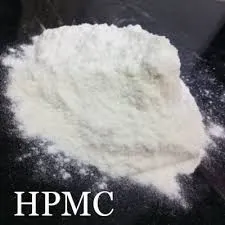
Nov . 24, 2024 08:21 Back to list
hydroxypropyl methyl cellulose hpmc
Understanding Hydroxypropyl Methylcellulose (HPMC)
Hydroxypropyl Methylcellulose (HPMC) is a versatile and widely used polymer derived from cellulose, the most abundant organic polymer on Earth. This cellulose ether is characterized by its ability to form viscous solutions in water and has gained immense popularity in various industries, including pharmaceuticals, food, cosmetics, construction, and personal care products. This article explores the properties, applications, and benefits of HPMC.
Properties of HPMC
HPMC is a white to off-white powder that is odorless and tasteless. It is soluble in cold water but not in hot water, forming a gel-like consistency upon dissolution. The chemical structure of HPMC includes hydroxyl and ether functional groups, which contribute to its hydrophilic nature. This hydrophilicity allows HPMC to promote water retention and assist in controlling the release of active ingredients in formulations.
One of the notable characteristics of HPMC is its thermal stability, which makes it suitable for a variety of manufacturing processes. Additionally, HPMC features a wide range of viscosity grades, enabling formulators to select the appropriate type based on the specific requirements of their applications.
Applications in Pharmaceuticals
HPMC is extensively used in the pharmaceutical industry, primarily as an excipient in drug formulations. It serves as a thickening agent, binder, and film-forming agent in both oral and topical dosage forms. The ability of HPMC to regulate drug release rates makes it an essential component in controlled-release formulations. For instance, when used in tablet formulations, HPMC helps in maintaining the desired release profile, ensuring that the active ingredient is delivered effectively over an extended period.
Moreover, HPMC is also employed in the preparation of hydrogels and bioadhesive systems, which can enhance the adhesion of topical formulations to the skin, leading to improved therapeutic efficacy.
Use in Food Products
hydroxypropyl methyl cellulose hpmc

In the food industry, HPMC is recognized as a safe food additive (designated as E464 in the European Union). It is primarily used as a thickening, emulsifying, and stabilizing agent in various food products, including sauces, dressings, and baked goods. Its ability to retain moisture makes it valuable in extending the shelf life of food items, as it inhibits the staling of baked goods and maintains the desired texture of sauces.
Additionally, HPMC serves as a fat replacer in low-fat food formulations, providing a creamy texture without the added calories. This application has made HPMC increasingly popular among health-conscious consumers looking for alternatives to traditional high-fat ingredients.
Role in Personal Care and Cosmetics
HPMC is also prevalent in the cosmetics and personal care industry. It acts as a thickener, stabilizer, and emulsifier in products such as lotions, creams, shampoos, and gels. Its ability to improve the texture and viscosity of formulations enhances the user experience, making products feel smoother and more luxurious. Furthermore, HPMC is often used in hair care products for its film-forming properties, providing a protective layer that helps maintain moisture and shine.
Construction and Building Materials
In the construction sector, HPMC plays a critical role as an additive in cement and gypsum-based products. It enhances workability, improves water retention, and extends the open time of mortars, allowing for better application and adhesion of materials. By improving the overall performance of construction materials, HPMC contributes to the durability and longevity of structures.
Conclusion
Hydroxypropyl Methylcellulose is a remarkable ingredient with a diverse range of applications across multiple industries. Its unique properties, including solubility, viscosity control, and thermal stability, make it a preferred choice in formulations for pharmaceuticals, food products, cosmetics, and construction materials. As research continues to unlock new applications and benefits of HPMC, its importance in these fields is expected to grow further. The versatility and effectiveness of HPMC demonstrate the essential role of polymer technology in enhancing product performance and consumer satisfaction.
-
Versatile Hpmc Uses in Different Industries
NewsJun.19,2025
-
Redispersible Powder's Role in Enhancing Durability of Construction Products
NewsJun.19,2025
-
Hydroxyethyl Cellulose Applications Driving Green Industrial Processes
NewsJun.19,2025
-
Exploring Different Redispersible Polymer Powder
NewsJun.19,2025
-
Choosing the Right Mortar Bonding Agent
NewsJun.19,2025
-
Applications and Significance of China Hpmc in Modern Industries
NewsJun.19,2025







